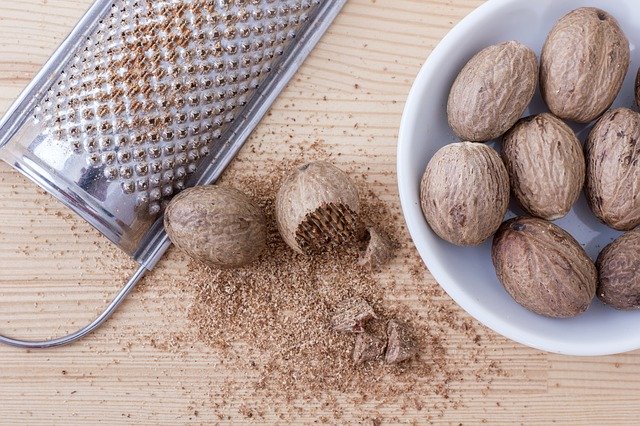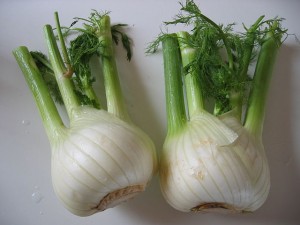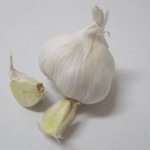While nutmeg is mostly known for cooking, there are other uses for this versatile spice. From spicing up savory food, to giving a subtle but deepening flavor to desserts, nutmeg appears to have health benefits too.

What is nutmeg?
Nutmeg comes from the only tropical fruit that produces two different spices: nutmeg and mace. The outer part of the fruit is mace and the sundried seed becomes nutmeg. The nutmeg tree is mostly grown in Indonesia, but can also be found in Grenada (West Indies). If you find the price of nutmeg high, here’s the reason why: it takes 7+ years before the first harvest, and 20 years before a nutmeg tree is in full production!
Benefits of nutmeg
Besides using it as a spice for sweet or savory dishes, nutmeg is also used in beverages like eggnog or coffee. It has many health benefits, some of which are obvious while others are harder to proof.
Nutmeg has among others, anti-inflammatory, anti-flatulent, antiseptic and local anesthetic properties. Some examples of application are:
- Mixed with warm milk it can help induce calm and sleep.
- Used with honey, relieve nausea and gastritis.
- Applied as a paste (nutmeg and milk) remedy zits or reduce redness and puffiness.
- Ground nutmeg used for healing small cuts and wounds.
Why I like nutmeg
From my own experience, I can confirm that this spice works like magic on cuts. A few days ago, I badly cut myself in an attempt to cut a large onion with dried skin. The onion “simply” slipped away from the chef’s knife as I was making the cutting motion. I KNOW! I had also JUST honed the knife to make it sharper…
The cut started bleeding immediately, but as I was putting pressure on it with my thumb, I grabbed the nutmeg dispenser and ran to my husband for help. He applied ground nutmeg and a band-aid to the cut. I also used an ice-pack to numb the pain when it starting throbbing.
I was so mad at myself for making this rookie mistake, but I put on gloves and continued cooking, trying to keep my bandaged finger from getting wet. When I was done, I realized that I no longer felt any pain! I diligently kept that finger dry for two days before removing the band-aid for replacement.
Although I’ve used nutmeg before, I was amazed again at what I saw. The skin had completely closed and looked like a hairline scar, accentuated by a thin residue of nutmeg. No pain, no swelling, no fluids… Without antibiotic ointment, which usually takes 5-7 days, my finger has been healing perfectly in less than 3 days!
Are you skeptical? I usually am too, until I see evidence. So don’t believe me, but next time you get a cut, go ahead and try this remedy. Then come back and tell us in the comments what you experienced.
Want to learn more? Here are two articles I found useful.


 The entire plant is edible and the taste is very similar to anise. The bulb and leaves can be used as a vegetable, while the seeds serve as a spice.
The entire plant is edible and the taste is very similar to anise. The bulb and leaves can be used as a vegetable, while the seeds serve as a spice.
